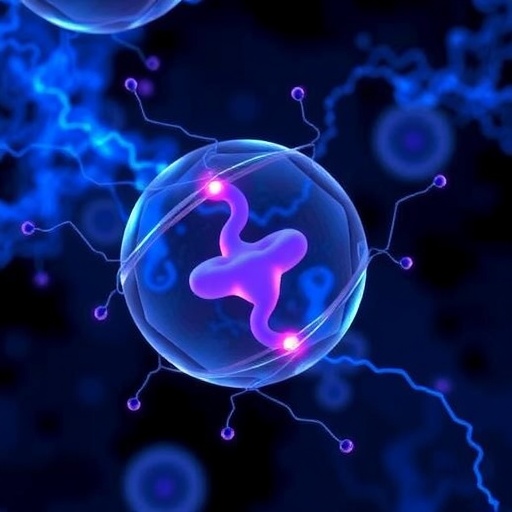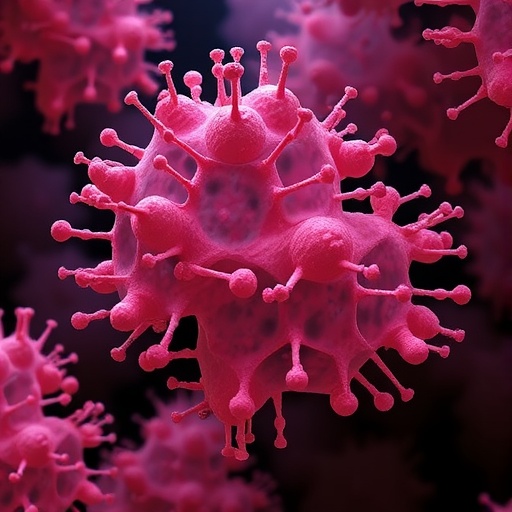In the rapidly evolving field of reproductive medicine, a recent study has emerged that promises to reshape our understanding of hormonal influences on fertility treatments. Conducted by a prominent team of researchers, including Yu et al., the study delves into the intricate relationship between serum luteinizing hormone (LH) levels, their increments, and the outcomes of frozen–thawed single blastocyst transfers during hormone replacement cycles. This research provides critical insights into optimizing fertility treatments, offering hope to countless individuals and couples facing challenges in conceiving.
Luteinizing hormone, or LH, plays a pivotal role in regulating the menstrual cycle and ovulation. Produced by the pituitary gland, LH levels exhibit fluctuations throughout the reproductive cycle, signaling various biological processes. In hormone replacement therapy, which is prevalent for those utilizing assisted reproductive technologies, maintaining appropriate LH levels is essential to ensure the best possible outcomes for embryo transfer. The specifics of how these LH levels affect implantation success rates have remained a significant point of inquiry, making this study particularly noteworthy.
In an innovative approach, the researchers collected and analyzed data from numerous patients undergoing frozen-thawed embryo transfers. They focused on the serum LH levels present on the day of endometrial transformation, a critical phase where the uterine lining is prepared for potential implantation of the embryo. By studying LH increments on this pivotal day, the authors aimed to correlate these hormonal measurements with successful pregnancy outcomes. Ultimately, their findings have laid the groundwork for a deeper understanding of how hormonal dynamics influence the success of fertility treatments.
Another essential aspect of this research is its focus on the timing of serum LH measurement. Past studies have suggested variable impacts of LH levels at different points throughout the reproductive cycle. However, by honing in on the exact moment of endometrial transformation, this study aims to clarify any ambiguous relationships that have plagued previous investigations. Clinicians and researchers alike anticipate that these insights could lead to the development of refined protocols for hormone replacement cycles.
The outcomes of the study are significant, indicating a strong correlation between optimal LH levels and improved results in embryo transfer outcomes. Not only do these findings highlight the importance of hormonal balance, but they also underscore the potential need for individualized treatment approaches in fertility therapies. The ability to tailor hormone replacement protocols based on specific LH measurements could revolutionize treatment plans and ultimately lead to increased success rates.
Additionally, this research contributes to the emerging narrative surrounding personalized medicine in reproductive health. As our understanding of the hormonal underpinnings becomes more sophisticated, practitioners may harness these insights to customize therapies that align with individual hormonal profiles. This tailored approach could significantly enhance the chances of successful pregnancies for patients who previously faced obstacles within standardized protocols.
Furthermore, the implications of Yu et al.’s findings extend beyond isolated cases. Fertility clinics worldwide could benefit from integrating the study’s conclusions into everyday practice. By placing an emphasis on monitoring LH levels and adjusting treatments accordingly, healthcare providers could create a more responsive treatment environment. This adaptability is crucial in the face of diverse patient needs and varying responses to fertility drugs, ultimately seeking to bridge the gap between research and practical application.
As the study gains attention, its potential to spur further research into LH and other hormonal influences on fertility is vast. It opens doors to new avenues of inquiry, exploring how other hormones interface with the reproductive process. The future of reproductive health may very well depend on unraveling these complexities, paving the way for advancements that can help more individuals achieve their dreams of parenthood.
Moreover, the study inadvertently raises questions about current practices in fertility clinics. Are practitioners adequately assessing and optimizing LH levels in their patients? As the knowledge base expands, it may prompt a reevaluation of existing protocols and calls for the integration of more nuanced hormonal assessments into routine fertility treatment processes. This evolution may not only enhance patient care but also contribute to overall developments in reproductive medicine.
The result is a tantalizing array of prospects for both patients and professionals in the field. Understanding LH’s role in embryo transfer success is a critical step; however, it represents just one piece of a much larger puzzle. The ongoing exploration of hormonal interactions will inevitably yield more comprehensive strategies, emphasizing the interconnectedness of different biological factors.
As this research continues to garner attention, it serves as a reminder of the importance of feedback loops between clinical practice and scientific inquiry. By embracing a culture of inquiry, the reproductive health community can strive for continual improvement powered by evolving knowledge and innovative research. The promise held within the realm of reproductive endocrinology is not merely academic; it translates directly into enhanced patient outcomes, ensuring that advancements resonate within the lives of individuals navigating the complex path of fertility.
In conclusion, Yu et al.’s study stands as a landmark contribution to the field of reproductive medicine. Its focused examination of serum LH levels and their implications for frozen–thawed single blastocyst transfer outcomes during hormone replacement cycles may steer future research efforts and clinical practices. This unfolding saga of hormonal influence in fertility treatments beckons continued exploration, fostering a landscape rich with potential, discovery, and hope for couples aspiring to become parents.
As the research community rallies around the insights garnered from this study, it becomes increasingly apparent that the dialogue surrounding fertility and hormonal health is gaining momentum. The commitments made today to explore hormonal dynamics more thoroughly will undoubtedly pay dividends in the future — for science, for practitioners, and most importantly, for the countless families seeking to grow.
Subject of Research: The impact of serum luteinizing hormone levels on impregnation outcomes during frozen–thawed single blastocyst transfers.
Article Title: Impact of serum luteinizing hormone level and increment on the day of endometrial transformation on frozen–thawed single blastocyst transfer outcome in the hormone replacement cycle.
Article References:
Yu, K., Zhou, J., Ju, J. et al. Impact of serum luteinizing hormone level and increment on the day of endometrial transformation on frozen–thawed single blastocyst transfer outcome in the hormone replacement cycle. J Ovarian Res (2025). https://doi.org/10.1186/s13048-025-01905-x
Image Credits: AI Generated
DOI: 10.1186/s13048-025-01905-x
Keywords: Luteinizing Hormone, Fertility, Embryo Transfer, Assisted Reproductive Technology, Hormone Replacement Therapy, Reproductive Endocrinology, Personalized Medicine.
Tags: endometrial transformation and embryo transferfertility challenges and hormonal balancefrozen-thawed blastocyst transfer outcomeshormonal fluctuations in menstrual cyclehormonal regulation in assisted reproductive technologieshormone replacement therapy and LH levelsimpact of LH on conception successluteinizing hormone and fertility treatmentsoptimizing fertility treatments with LHreproductive medicine and hormonal influencesserum LH levels and implantation successstudy on LH in reproductive health





